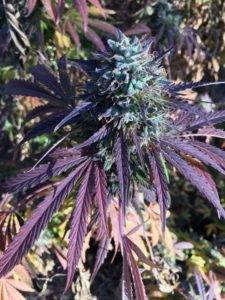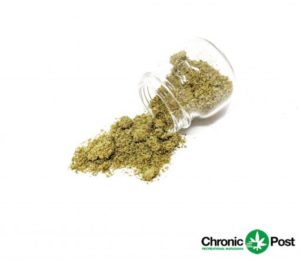This past week saw groundbreaking events take place in the drug policy reform movement. Most notable were Dr. Sanjay Gupta’s documentary CNN ‘Weed;’ Attorney General Eric Holder’s announcement of plans to change to the federal sentencing guidelines that could reduce the number of people in federal prisons for low-level drug law violations; federal Judge Shira Scheindlin’s ruling that the New York Police Department’s stop-and frisk policies are unconstitutional; and New Jersey Governor Chris Christie’s announcement that he would allow “edible” medical marijuana products to be used by minors for treating life-threatening illnesses.
While these events can certainly be seen by those of us as activists in the drug policy reform movement as being positive signs that we are winning this battle, we can’t lose site of the fact that there is still a way to go.
In my opinion, it is time for those of us who are medical marijuana users to come out of the proverbial closet and let our elected officials know who we are. And so it is now time to tell you my story.
I am a 63 year old woman who has used marijuana for medical purposes on an almost daily basis for more than 30 years.
On June 28, 1971, I was riding my motorcycle to my nursing job when a lady who by her own admission had two glasses of wine with her friends during lunch, hit me directly with her car when she thought she could beat me across the street. My last thoughts were bouncing off her windshield and flying through the air landing in a McDonald’s parking lot (the tar burns still remain on my arm).
I ended up in the ICU where my ‘significant’ injuries consisted of breaking most of the bones in my face, shattering the bone in my upper left arm and breaking several vertebrae in my lower back. By evening, the swelling in my face had increased to the point where it was cutting off my airway, so an emergency tracheostomy was performed so I could breathe. The doctors told my family it was only a matter of time before I died, so they essentially hooked me up to a morphine pump to manage the pain and waited for the end to come.
Being the stubborn person that I am, I somehow managed to pull through and they began to patch me up. They used my high school graduation picture to reconstruct my face. Multiple surgeries were done to my arm which included the insertion of a steel plate and a number of screws. Because the breaks to my vertebrae were “clean,” it was decided that no surgery would be done, but I was warned that this was going to cause some serious problems in the future and I would be living with pain for the rest of my life.
It didn’t take long before I developed osteoarthritis in my back and was taking a number of prescription pain meds and muscle relaxers. The doses needed frequent adjustment as anyone with chronic pain issues can tell you, you quickly develop a tolerance for the meds and they no longer work the way they initially did.
Let me mention a bit about living with chronic pain. Every day of my life since my accident, I wake up not wondering “if” I will be in pain today, but rather “how much” pain I will be in and how I will manage it today. There are some days that are better than others. But there are also the days when I literally have to crawl to the bathroom as I can’t stand on my feet when I first get out of bed. However, a lot of people are under the impression that all you have to do to manage chronic pain is to take a pill or just “suck it up.” If only it were that simple.
My experience with marijuana did not begin until after my accident. There were two good reasons for this. First, there was no marijuana available in the Midwest when I was a teen that I was aware of. But the real reason was because of my Dad. My Dad immigrated to this country from Austria – and boy did he love the U.S.A. He never doubted any public policy and he certainly believed that you followed the laws. Dad saw everything as being “black and white” – the idea of a grey area was something he wouldn’t even entertain. So if my Dad had known that I smoked pot, he would have personally called the police and had me arrested – even as an adult!
Fortunately, we had a chance to talk about this whole marijuana issue when my Dad became terminally ill but he still remained steadfast in his belief that while marijuana may have some benefit, you can’t use it as it’s against the law.
Certainly I would not be honest if I tried to say that my first experience with marijuana was for medical reasons. I liked getting “comfortably numb” as much as my friends. But I noticed one real benefit. When I smoked marijuana, the pain was better.
Over time, I conducted my own “clinical trials” and found that if I smoked marijuana, I didn’t need as many prescription meds. And unlike the prescription meds, with marijuana, I did not experience the stomach upsets, constipation or other side-effects I did with the prescription drugs.
I’ve had the opportunity to visit Amsterdam on many occasions. When I’m there and have access to reasonably priced, high quality marijuana, I don’t need pain meds or muscle relaxers.
In 2006 I had a period where I was hospitalized for 6 weeks with endocarditis and some kind of growth in my lower back that increased the pain to the point that I was unable to walk. To ease the pain, the doctors inserted a morphine pump. Clearly I could not use any marijuana while hospitalized but I did make an observation. Even with all the morphine being pumped into me, the pain did not entirely go away.
When I was finally able to go home, I was now using a walker and wearing a morphine patch and had prescriptions to take six Vicodin a day along with a potent muscle relaxer twice a day. (Did I mention that I have a very high tolerance to medication?) As soon as I was once again able to get back into my regime of smoking marijuana a few times a day, I didn’t need the patch and soon was able to cut the Vicodin down to 4 a day and I can now walk with use of a cane.
So for me, I don’t need any more scientific studies – I know that marijuana works for me.
Now there is a big misunderstanding among many that those of us who use marijuana are useless individuals who just sit around all day getting high and eating Doritos. This is one of the reasons why I believe that it’s time for us to put a face on who we medical marijuana users are.
During the past 30 years that I have used marijuana for medical reasons, I have always had a full-time job. Additionally, during this time I have gotten a second college degree in Business Administration; earned a paralegal certification from Roosevelt University; and a dual Master’s Degree in Public Service Administration and Health Care Law at DePaul University. I have also served on the Board of Directors of the Housing Cooperative where I used to live, the Board of a foundation for children with special healthcare needs, the Mayor of Park Forest’s Advisory Commission, and the Park Forest Environment Commission to name a few of my extracurricular activities. All of this was accomplished primarily because medical marijuana helped me manage my pain so that I could be a productive member of society.
Because I have a professional license (along with that threat of my Dad putting me in prison), I have been afraid to speak publicly about my situation. My activism in reforming the marijuana laws has been primarily through financial contributions to various medical marijuana/drug reform organizations and trying to educate my elected officials about the benefits of medical marijuana by providing them with as much data as I can.
But now that I’m no longer able to do any clinical nursing and have moved to Oregon and now a member of the Oregon Medical Marijuana Program, I feel comfortable to “come out of the closet.” Some of my friends who know my situation were surprised that I was relocating particularly in light of the passage of Illinois’ Compassionate Use of Medical Cannabis Pilot Program Act. But when you really examine the Illinois Program, it’s not a ‘real’ medical marijuana program at all. Yes, it is a start. But I seriously question if it will ever get off the ground. Let’s take a minute to look at this law.
First, as the title says, the Illinois medical marijuana program is a 3 year pilot program. There is nothing in the law that says what happens at the end of the 3 years. In signing this law, Governor Quinn indicated that the Illinois legislature intended this to be one of the most stringent laws in the country giving the impression that those states that currently have medical marijuana programs, are filled with people lying in the streets getting high – a picture that most people have of Amsterdam who have never been there – actually the only people I’ve ever seen in Amsterdam that are “overindulging” are from the United States!
Under the Illinois pilot program, only those with one of 30 qualifying conditions will be eligible – diagnoses like multiple sclerosis, cancer or HIV. The law is clear, that most like myself who have chronic pain problems won’t qualify even though you could make an argument that one of the primary reasons why most of those who suffer from these “qualifying conditions” will be using marijuana for pain management. Patients will need to be fingerprinted and go through a background check. You’ll also need to register with the state and your local police and the Department of Registration.
Marijuana will be produced in Illinois at 22 centers that will be under 24 hour surveillance and distributed to 60 state-run outlets. Patients, unlike the case in many states, cannot grow their own marijuana. The list of requirements goes on and on. For an excellent article on the Illinois program, seehttps://radicalruss.com/while-illinois-makes-medical-marijuana-stricter-uruguay-proposes-legalization/
While this pilot project is supposed to start in Illinois on January 1, 2014, there’s one huge obstacle to making this become reality. All this administrative process that Illinois is proposing will cost a lot of money. While marijuana growers and patients are going to be charged a 7% “privilege tax” (patients will also pay a 1% tax at the time of purchase) that will be used to enforce the law, these taxes will take place at the time of registration. But an administrative program such as what is being proposed in Illinois costs money to operate. Just where are the start-up costs coming from? And as those of us who have lived in Illinois know, the state of Illinois is essentially bankrupt. With the “Mighty Quinn” up for re-election soon, how many votes will he be getting from those worried about their pensions not being funded or parents whose schools are closing if the state priority appears to be funding this medical marijuana pilot program?
So let me tell you a bit about my experience here in Oregon. Of the 3.9 million people who live here, 57,000 people are enrolled in the medical marijuana program. To qualify, you begin by seeing an Oregon doctor who must then get copies of your medical records from your treating physician. Once these records are received and reviewed, you must get an additional physical from an Oregon physician to make sure that you have not been “doctor shopping” – the practice of finding a doctor who will fill out paperwork to say what you want.
Oregon allows you to grow your own marijuana. However, if you do not want to grow yourself, you need to find a registered grower. Growers are only allowed to grow enough marijuana for 4 patients who each are allowed one ounce of marijuana a month. Growers have to go through a criminal history check before they can be registered with the state. Growers are not allowed to charge their patients for their medicine. However, if the patient wishes, then they can make a contribution to the costs associated with growing the marijuana. Since medical marijuana is best grown indoors, these costs are for the electricity, water, and nutrients. If you choose to make a financial arrangement with your grower, it must be in a written contract clearly stating the amount that you will be paying. This information goes to the state to ensure that growers are not making a profit.
Once all the paperwork is complete, it gets sent to the state along with the application fees — $200 for the patient fee and an additional $50 if you are using a grower. I should also mention that the cost of the physical from the Oregon physician was $150 – so you’re looking at approximately $400 to get your medical marijuana card. There are some fee reductions available under certain circumstances, but I’ve heard from several people that there are people who can’t participate in the program because they simply can’t afford it. I should note that one of the reasons I was able to get approved in the Oregon program so quickly was because I had brought copies of my Illinois medical records along with me. Normally the approval process can take upwards of several months.
Now while $400 to get a medical marijuana card might sound expensive, a quarter ounce of marijuana in Illinois is currently selling for $240 or $960 an ounce. My budget would only allow me to purchase about a quarter ounce a month. So in less than 2 months my fees are covered. But since I’ll be getting an ounce of marijuana a month for free, not only will I be saving a huge amount of money, I’ll have more than enough marijuana available so that I will be able to continue my goal of reducing the amount of prescription meds I’m now taking. However, while all of this sounds really good, I, like other medical marijuana users, cannot lose sight of the fact that in the eyes of the federal government, we are still criminals.
When I go to a new doctor, I never tell them that I’m a nurse right away because it gives me the opportunity to take an objective look at how the doctor will treat me. I was very impressed with the doctors I saw here in Oregon. They certainly don’t treat this program as a way for people to have an easy way to get high, but as real medical treatment. As a result, they encourage you to use your medical marijuana as you would any other prescription medicine – take it at regular intervals and at a consistent dose. Since there is much debate about the pros/cons of smoking marijuana, they encourage you to use tinctures made with the marijuana and take it orally or put it in a cup of tea. Since marijuana is currently not manufactured in a way that an exact dose can be determined, using a tincture gives more assurance that you are getting a similar dose each time you use it.
My life plan was to always live in Park Forest, Illinois until my final days. However, for many reasons, the state of Illinois made it impossible for me to stay there. And at 63, I just would not do well in jail, so it was necessary for me to move from my home in order to have access to the one medicine that has enabled me to manage my pain and live as normal a life as possible. Isn’t it really kind of sad that you have to move 2,000 miles to get the medicine you need?
Like most activists in the medical marijuana movement, I’ve studied what has been going on in other states where they have similar laws. They all seem to work like the one here in Oregon. And while I’m certain that there are people that slip through the cracks, we can’t deny that with all the controls on alcohol, there are still underage children getting it. But there hasn’t been any movement to once again ban alcohol.
Some activists are of the opinion that the focus should not be on medical marijuana but on legalization of the plant entirely. Personally, I see these as two distinct issues and I support both. Legalization of marijuana for recreational use should happen. But in my opinion, this legalization should come along with the same controls as we have with alcohol. Studies have clearly shown as was pointed out in the “Weed” documentary, that smoking marijuana by adolescents whose brains are still developing causes the same kind of damage as drinking alcohol. While legalizing marijuana won’t entirely end this problem, just as has been the case with alcohol, the number of young people having access to marijuana will reduce with similar controls placed upon it.
So while it’s been a great week for “our side,” there is still a lot of work to do. While organizations like NORML, Americans for Safe Access and the Drug Policy Alliance are doing great things to further the cause, I think it’s time for more of us to come out of the closet and let our politicians know who we are.
If you, or someone you know, is a medical marijuana user, we are offering you a platform here at eNews Park Forest to tell your story. What has been your experience? How old are you? How long have you used marijuana? What is your life like because of it? Send your articles to me at [email protected] and we’ll get it published. If you’re not comfortable with disclosing your name publicly, believe me, I understand and won’t publish your name. But from my experience, most of us using marijuana for medical purposes are productive members of our community and nothing like the “Cheech and Chong” image that many have of marijuana users. We need to make this point loud and clear.
And if telling your story publicly is not an option, then let your elected officials know how you feel. This war will be won and now is the time to step up and do your part.
About the author: Rosemary Piser is the Associate Editor of eNews Park Forest. eNews Park Forest, Inc. is an independent media company and is not affiliated with the Village of Park Forest in any way.
Source: eNews Park Forest




























